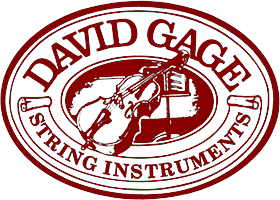
DGSI has been matching musicians with the right instruments for over 30 years. Instruments are shown on the second and third floors of our shop. Appointments are highly recommended for rentals, repairs, appraisals, and the showroom.
Looking for a new instrument is like looking for a life partner: what you want is "someone" who understands you, supports you, challenges you, minimizes your weaknesses, and generally brings out the best in you. So our first piece of advice is: don't be shy! Knock on all doors, visit all nearby dealers, spread your net wide, let everyone know you are on the lookout, because you never know where love will up and bite you. Our second piece of advice is: get as much information as you can. Look up instruments online, ask your teacher, talk to your stand partner, or visit your local library.
We've created an Instrument Buying Guide that we hope will provide you with some useful information for your search. And if you've already found your life partner and just want to know how to care for it, check out David's articles in David's Corner.
David's Articles
Injury Prevention and Recovery for Bassists
Dennis James
In this first article on Injury Prevention and Recovery, I would like to stress ‘prevention’. It is so much easier to prevent injuries than take the long road back, as in many cases, to an incomplete ‘recovery’. The more understanding one has about the healing process, the more control one will have in making intelligent decisions in remaining injury free and healthy.
Repetitive movement and overuse are the musician’s dilemma. One must realize that sometimes there will be a certain amount of damage. The goal is to minimize the damage and manage issues properly when they occur. This can be accomplished in a number of ways, diet and exercise being the two most important. For example, Carpal tunnel syndrome is very common among musicians and persons working long periods of time at computers. One way of treating it through self-care is to eliminate packaged foods that usually carry the dye tartrazine (FD&C Yellow#5) which interferes with vitamin B6 in the body. Eating foods rich in vitamin B6 such as brewer’s yeast, sunflower seeds, soybeans, walnuts, legumes, brown rice and bananas or taking vitamin B6 supplements have shown to decrease the symptoms of carpal tunnel through clinical testing. Fresh pineapple juice and ginger are suggested for flare-ups. Exercises are numerous depending on the individual’s history and symptoms, but a simple rotating of the shoulder for a minute or so every day may help free up the median nerve and give relief. Future articles will be covering these types of injuries with a more detailed and comprehensive approach to the prevention and recovery of them.
A third helpful way to prevent or treat injuries, would be to receive bodywork with someone who understands the stress you have put on your arms, shoulders, neck, hands, legs , back, etc. This will help you recover faster and become more aware of imbalances that should be attended to immediately. A good practitioner should also be able to guide one through a set of exercises and self-care techniques, and discuss ergonomic awareness, so that one will have more control over his or her recovery. Whether it’s Swedish massage, shiatsu, acupuncture or Thai yoga massage is not important. The type of bodywork that one prefers is a personal choice and sometimes an acquired taste. Appreciating a variety of different bodywork techniques definitely has its advantages in promoting a wider range of benefits.
Listed below are a number of books that are very informative on diet, exercise, stretching and self-care. These books express an east/west perspective and are extremely accessible to the layman and invaluable as aids in preventing injuries or helping with their recovery.
Harriet Beinfield, L.Ac, and Efrem Korngold, L.Ac. O.M.D./
Ballantine Wellspring- The Random House Publishing Group
This book combines Eastern traditions with Western sensibilities with a current relevance. A comprehensive introduction to Chinese medicine- theory, therapy and types. It also covers the role of herbs and food in healing.
Tom Bisio / Simon and Schuster Publishers
Very simple descriptions of treatments of common sports injuries from a Traditional Chinese Medicine perspective. Lots of interesting anecdotes and imagery.
Robert E. McAtee and Jeff Charland/Human Kinetics
Assisted and unassisted PNF stretching made easy. Clear explanations and photographs of proper stretching techniques. First published in 1993, it was the first book to translate the complexities of proprioceptive neuromuscular facilitation into an easy, step by step method.
Michael Murray N.D. Atria Books
The most comprehensive user friendly guide on nutrition and medicinal benefits of food.
Using the wisdom of your Body and Mind to Face Stress, Pain and Illnes
Jon Kabat-Zinn
